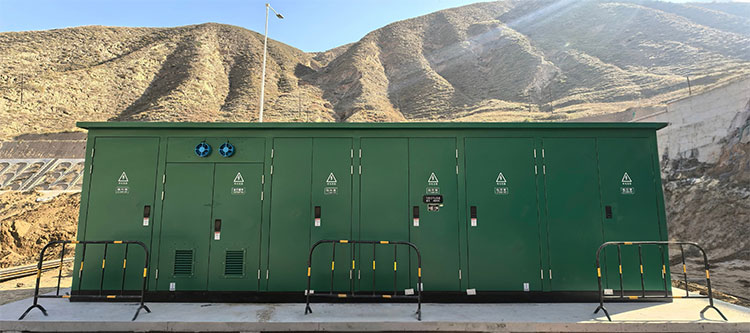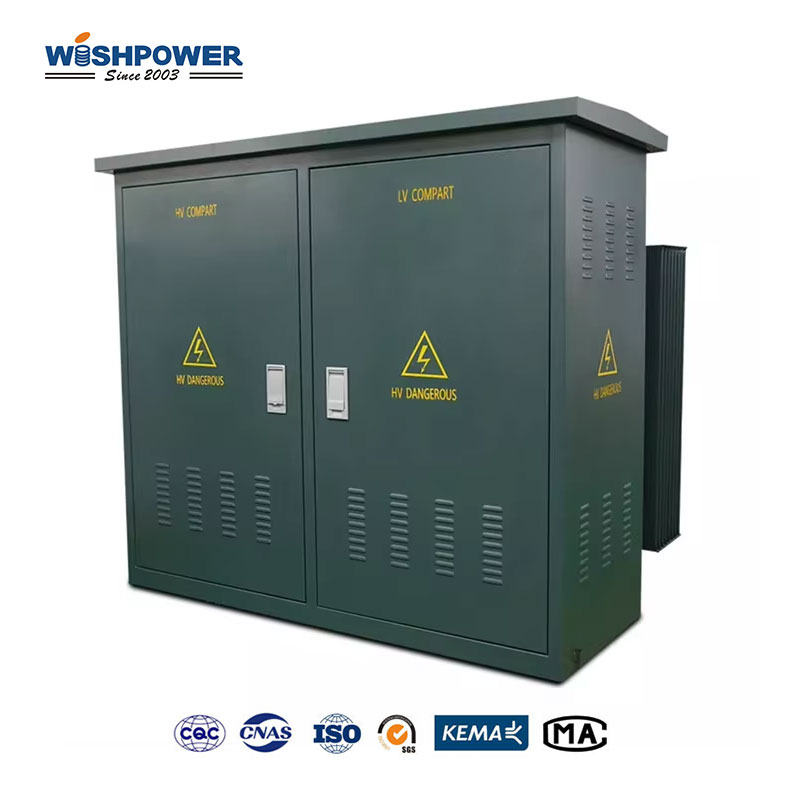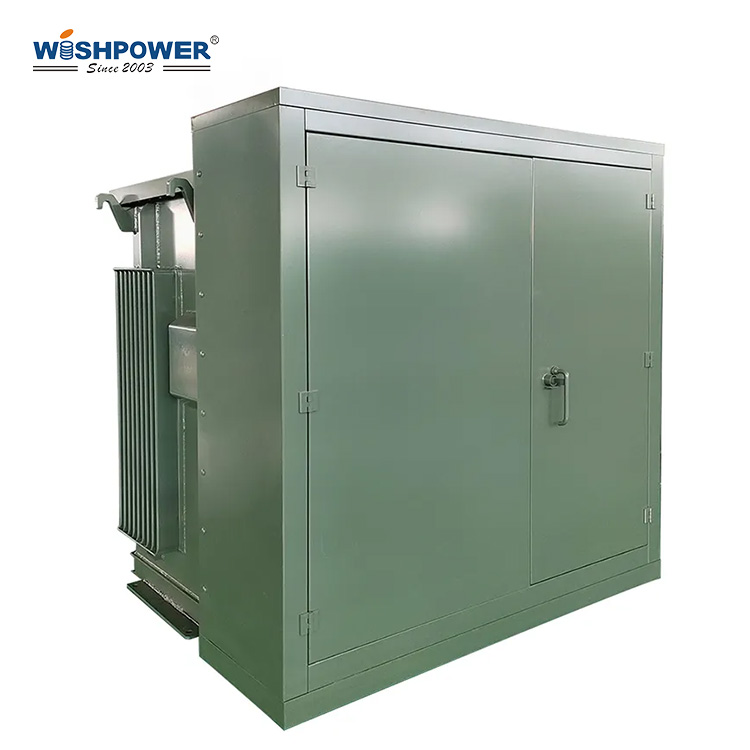What is a prefabricated substation?
A prefabricated substation combines high-voltage switchgear along with transformers and low-voltage distribution equipment inside a prefabricated structure which belongs to the categories of compact substation or packaged substation. These substations prove useful for fast deployment needs in various residential, commercial, and industrial power supply situations because of their space-efficient design and reliable operation. The manufacturing process of prefabricated substations produces all-inclusive units at factories and then transports them directly for installation to save time and funding for on-site construction.

Components of a Prefabricated Substation
High-voltage switchgear sections control grid electricity inflow and execute defensive measures that protect systems while cutting off defective connections to stop equipment breakdowns.
The Transformer functions to decrease the electricity voltage from high levels to safe distribution voltages that serve residential areas as well as industrial and commercial facilities.
Electricity distribution operates through the Low-Voltage Distribution Panel which distributes power safely to different circuits.
Enclosure: A protective housing that shields internal components from environmental factors such as dust, moisture, and extreme temperatures.
The cooling system utilizes ventilation and cooling methods to sustain proper operating temperatures.
Advantages of Prefabricated Substations
Their compact design enables these units to occupy limited spaces better than traditional substations so urban areas benefit from this capability.
The fact that prefabricated substations arrive pre-assembled from factories enables quick installation for swift implementation during construction projects.
Their installation together with maintenance expenses remains affordable thus making them a budget-friendly power distribution solution.
Operational reliability along with electrical hazard prevention emerges from built-in safety features that designers integrated during the manufacturing process.
Different application requirements can be addressed by prefabricated substations available at multiple voltage levels and specifications.
Prefabricated substations minimize environmental damage through their adoption of sustainable materials together with energy-saving system elements.
Applications of Prefabricated Substations
The setup of Urban Power Distribution fills the requirements of metropolitan regions because it provides space-saving and effective power delivery systems.
These projects utilize prefabricated substations to supply renewable energy for solar farms and wind energy systems before distribution.
Industrial facilities achieve reliability in their power supply because of these substations in their manufacturing plants processing units and refineries.
The distribution of continuous electrical power in shopping malls data centers and office complexes is supported by these facilities.
The implementation of power distribution systems requires these devices throughout railway networks airports and national highways.
Construction projects receive their power supply for operations through temporary substations at construction sites.
Design and Construction Considerations
The designed substation needs to fulfill both voltage level requirements as well as power capacity needs.
Accounting for environmental protection the housings need to achieve ratings that maintain operation in severe weather conditions (IP54, IP65).
Adequate cooling systems alongside ventilation systems help electrical components survive by preventing overheating while improving their operational lifetime.
The operational safety is improved through features like overload protection mechanisms and grounding systems together with fire-resistant materials.
Every module features quick maintenance accessibility for professionals to inspect and service all components.
Installation and Maintenance
The installation area needs to be leveled and strengthened because the substation needs areas that can hold its weight correctly.
The team installs the equipment at the selected location and completes the electrical connectors between high and low-voltage areas.
The electrical system needs verification tests before starting its service to prove its safety levels.
Continuous maintenance helps the substation work best and provides these tasks:
Regular visual examinations detect any signs of damage or temperature problems on the equipment.
Power tests run on transformers, switchgear, and distribution panels confirm their working state.
The team measures how well the ventilation systems cool down the system components.
The substation area remains safe from dust by regular cleaning while damaged parts receive timely replacement.
Future Trends in Prefabricated Substations
The rising energy needs and smart grid requirements drive the continuous development of prefabricated substations. Some emerging trends include:
Smart Grid integration lets operators monitor every part of the system and predict any system problems ahead of time.
The organization selects transformers that save energy and opts for materials that can be recycled.
The Internet of Things technology lets users inspect their systems and make operating changes from any location.
The growing introduction of solar and wind power systems across the country requires prefabricated substations to work them into the national power grid effectively.
Conclusion
The installation of prefabricated substations improves power distribution systems at a lower cost while increasing performance. Their part-based design plus protective measures works well for different setups whether you need them in city developments or clean energy projects. Technology improvements will increase the important role these substations have in power systems across different countries. Both large industries and smaller businesses can use prefabricated substations to bring power security to their operations.
If you have different opinions or want to know more, please leave a message on the website or contact us directly at info@wishpower.net

















